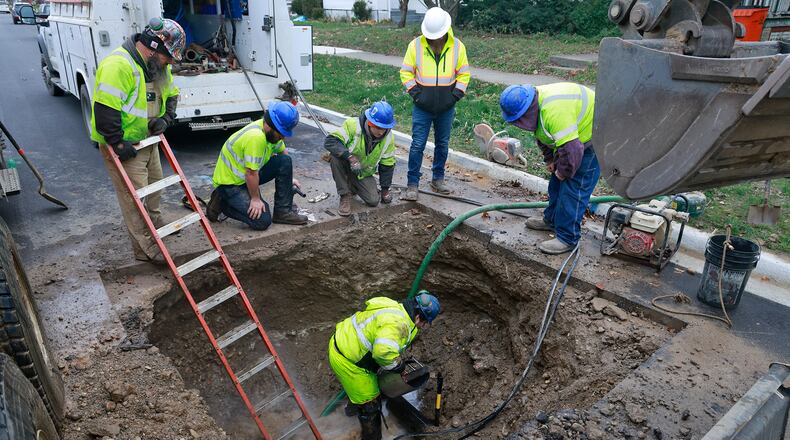She said the city will balance the 2025 budget by moving $5 million in federal ARPA revenue replacement funds at the end of 2024.
City income tax revenues are projected to increase by 2.8% compared to the revised 2024 budget, as there has been business and housing growth in the city. That tax source makes up the lion’s share of funding for city services.
“The reality is that the general fund is under significant strain,” Eviston said, “and without the support of state and local fiscal recovery funds from the American Rescue Plan Act (ARPA), we would not have been able to balance the 2025 budget.”
ARPA funds have been essential to enabling the city to maintain financial stability, Eviston said.
“As part of the city’s $44.2 million ARPA allocation, the U.S. Treasury authorized up to $10 million be used as revenue replacement to offset losses stemming from the impact of COVID-19,” she said. “For 2025 we are utilizing just over $5 million of these funds, which underscores how critical these dollars have been in helping us maintain essential services and avoid deeper cuts.”
The deadline to officially obligate ARPA funds is December 31, 2024. If that obligation deadline is not met, funds must be returned to the U.S. Treasury.
Eviston’s presentation of budget projections is part of the city’s annual budgeting process that began months ago.
General fund revenues
Eviston said local income taxes are critical to the funding of essential services the city delivers, especially in light of reductions in state funding for local government.
Income taxes comprise 81% of the city’s budgeted dollars, and Eviston expressed appreciation to Springfield citizens for their support of the 2.4% income tax levy in 2017 and again in 2021. Ninety percent of every income tax dollar is allocated to the general fund, while 10% is earmarked for permanent improvements.
Credit: Bill Lackey
Credit: Bill Lackey
Income tax revenues are expected to grow by 2.8% in 2025, which is important because changes in state funding have made cities more reliant than ever on income tax revenue to deliver core services, a point stressed by Eviston and underscored by Mayor Rob Rue during the presentation.
Other sources of funding deposited to the general fund include fines and forfeitures (2%), services and charges (3%) Local Government Fund and state shared taxes from Columbus (4%) and all other (10%). “Other” sources include hotel and motel taxes, intergovernmental agreements, interest earnings and reimbursement.
General fund expenditures
Budgeted expenditures for 2025 total $60.97 million, which Eviston said is $8 million less than the $69.6 million originally requested for 2025.
The 2025 budget projects an operational deficit of $1.8 million. Eviston said the city expects to post a 2024 general fund deficit of $1.5 million, almost double the originally forecast deficit of $876,000.
“This growing deficit is largely driven by inflation and the continued impact of remote work on income tax revenue,” Eviston said. “To maintain essential services we have relied not only on reserve spending, but also the one time ARPA funding to offset the financial impact of the pandemic to balance the budget.”
The city expects to end 2024 with a fund balance of $8.2 million (12.3% of a year’s spending). Then if 2025 goes as forecast, the city would drop to a $6.4 million balance in Dec. 2025 (10.5% of a year’s spending).
Eviston said the Auditor of State requires that the city have at least 8.3% in reserve (one month’s spending), while the city’s own target is 10%, and the Government Finance Officers Association recommends a minimum of 16.7% (2 months worth of expenses in reserve).
The bulk of expenditures for the city are for public safety (54%) which includes the police and fire divisions, as well as shared dispatch operations with Clark County. Both Municipal Court operations and Neighborhood Services account for 9% of budgeted expenditures, while 2% is allocated for the Clark County Park District and Springfield City Transit System.
Credit: Bill Lackey
Credit: Bill Lackey
“Other” expenditures account for 26% of the budget and include administrative costs associated with city offices including that of the city manager, finance department, legal, information technology, human resources and others.
Overall staffing is budgeted at 595 FTE in 2025, which is higher than 2024 but still a substantial reduction from previous years. Both Police and Fire Divisions are authorized for 130 FTE, though both have struggled to maintain that threshold of staffing.
Permanent Improvements
While $21.5 million was originally requested, the city has budgeted only $8.3 million for permanent improvements for 2025, which includes continuance of the Neighborhood Street Paving Program, equipment purchases for police and fire divisions, capital improvements in city parks and repairs and maintenance to city buildings.
Investments in utility services continue to be a challenge, as over $100 million has been spent over the last five years to improve infrastructure for water/sewer/stormwater utilities, with additional capital investment required to meet federal regulatory standards. As a result, city residents will see increases in rates in both 2025 and 2026.
“Despite these increases, Springfield’s total utility rates remain among the lower half of communities when compared to others in the Miami Valley,” Eviston said.
Credit: Bill Lackey
Credit: Bill Lackey
About the Author



